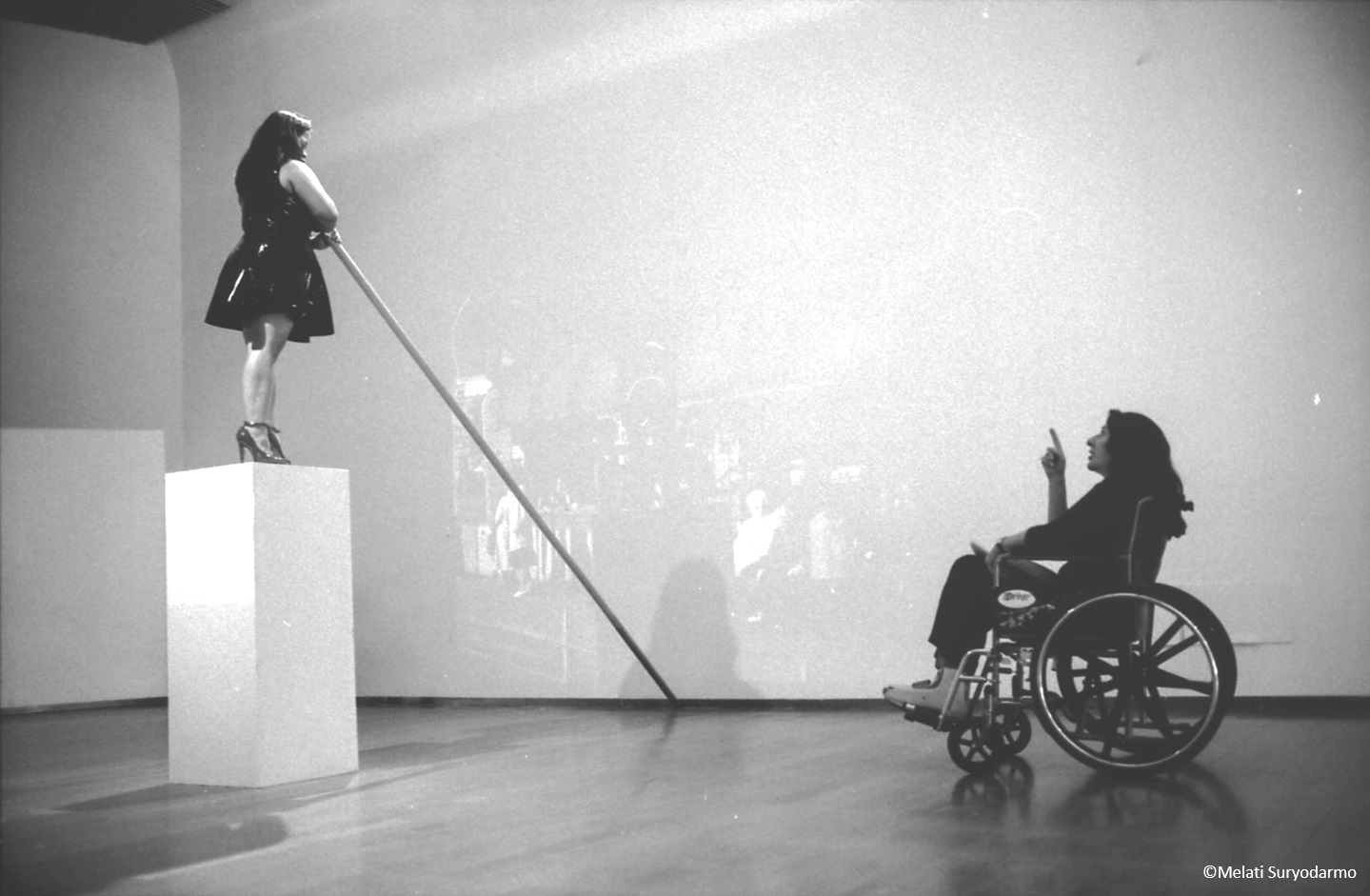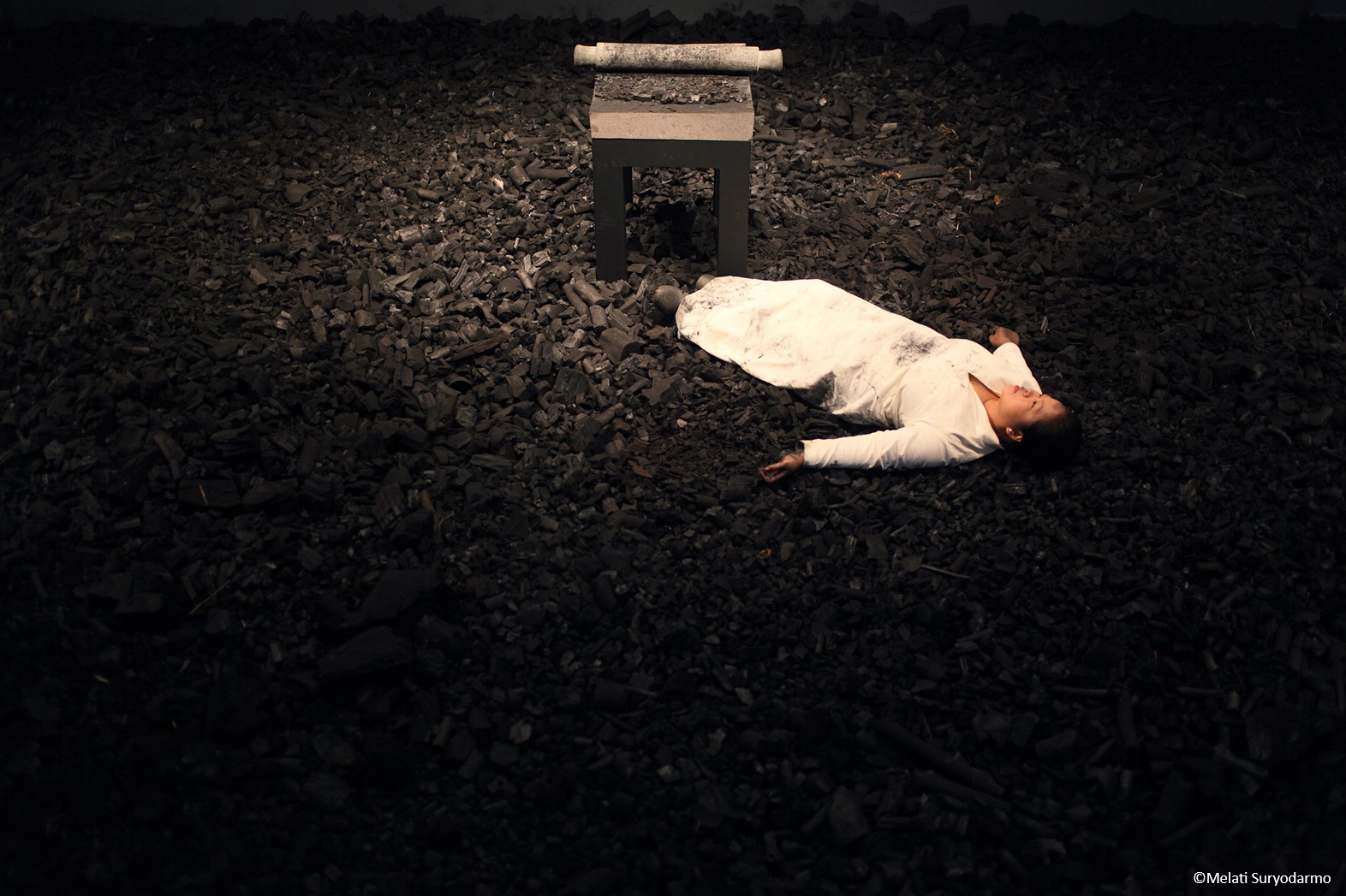Opening hours
:::
2025/07/11
Melati Suryodarmo, Indonesian Performance Art Pioneer: A Poetic Mind Reconstructing the World through the Body
By Zhang Yiwen (Associate Professor in the International MA Program in Studies of Arts and Creative Industries at TNUA)
From Java tradition to the global Stage — the making of a cross-disciplinary artist
Melati Suryodarmo was born in 1969 in Solo, Indonesia, a historic city known for its rich cultural traditions. Her practice is rooted in Java’s deep animist heritage, yet she expresses it through a highly contemporary body language that has sparked profound reflection on humanity, ecology, and social structures within the global art world. This has earned her recognition as one of the most influential contemporary performance artists and choreographers from Southeast Asia.
Melati’s talent in performance stems from a strong family background: both of her parents were dancers, and she herself trained in dance from a young age. Later, she also studied Taichi and Javanese meditation. In university, she majored in International Relations and was active in the anti-Suharto student movement. Her exposure to Western art began when she studied at Braunschweig University of Art in Germany (1994–2001), where she trained under performance art pioneer Marina Abramović and Butoh master Anzu Furukawa.
 Melati Suryodarmo and Marina Abramović (Image provided by the artist)
Melati Suryodarmo and Marina Abramović (Image provided by the artist)
This cross-cultural experience helped shape her distinctive creative methodology: she blends Butoh’s “dark bodily aesthetics” with the critical lens of European conceptual art, developing a cross-disciplinary practice situated between dance, performance art, and installation. In several interviews, she reflected on how her time in Germany helped her distill Java’s ritual aestheticism into a contemporary artistic language, while also reshaping the philosophical role of the body in performance —an approach art critics often describe as using the “body as a carrier of thought.”
In her 2001 piece Why Let the Chicken Run?, she chased a live chicken around a room in circles, questioning life’s endless pursuits. In The Black Ball (2005), she sat motionlessly for eight hours on a chair mounted high on a gallery wall, holding a black ball in her hands. And in her 2012 work I am a Ghost In My Own House, she wore a plain white robe and stood amid piles of charcoal, using a heavy stone to grind it on a table until it turned to powder. Over twelve hours — without food or rest—the black dust slowly stained her clothes, skin, and face. As she grew visibly more exhausted, audience members came and went. Some stayed with her; others left, unable to bear the intensity. Regardless of their reactions, each viewer became an integral part of the work. Through the act of crushing charcoal—a substance that holds energy—she metaphorically addressed the unavoidable losses and regrets in life.

I am a Ghost In My Own House (Image provided by the artist)
Another of Melati’s most iconic works is Exergie-Butter Dance (2000), premiered at Berlin’s HAU Hebbel am Ufer. In the piece, the artist wears red high heels and dances gracefully atop a giant block of butter to traditional Indonesian music. At first, her movements are elegant and composed, but as the butter begins to melt, she repeatedly slips, falls, rises, dances again, and falls once more—laying bare this raw, visceral cycle. The work speaks to a deeper truth in life: falling is inevitable, but what truly matters is the courage to stand up again. In 2012, this performance video went viral after being remixed online with Adele’s Someone Like You, gaining millions of views. The New York Times featured her as “one of Indonesia’s brightest artistic stars.” This unexpected viral fame brought performance art into public discourse, prompting broader conversation around what defines the genre.
.jpg) Exergie-Butter Dance (2000) (Image provided by the artist)
Exergie-Butter Dance (2000) (Image provided by the artist)